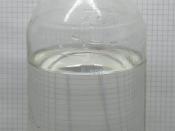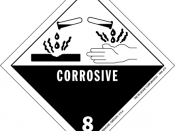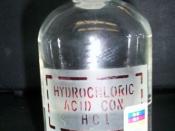AIM:
I will investigate the effect of concentration on the rate of reaction between magnesium and hydrochloric acid. Also to find out how much and how quick hydrogen is produced.
Magnesium, symbol Mg; silvery white metallic element that is relatively reactive. In group 2 of the periodic table, magnesium is one of the alkaline earth metals. The atomic number of magnesium is 12.
The rate of a chemical reaction is a measure of how fast the reaction takes place. It is important to remember that a rapid reaction is completed in a short period of time.
BACKGROUND INFORMATION:
Magnesium(s) + Hydrochloric acid(aq) = Magnesium Chloride(aq) +
Hydrogen(g)
Mg + 2HCl = MgCl2 + H2
In the reaction when the magnesium hits the acid when dropped in,
it fisses and then disappears giving of hydrogen as it fisses and it
leaves behind a solution of hydrogen chloride.
The rate at which all reactions happen are different.
An example
of a fast reaction is an explosion, and an example of a slow reaction is rusting.
For particles to react:-
a) They have to collide with each other.
b) They need a certain amount of energy to break down the bonds of the
particles and form new ones. This energy is called the "Activation
Energy" or Ea.
When we increase the temperature we give the particles more
energy which:
1) Makes them move faster which In turn makes them collide with each
other more often.
2) Increases the average amount of energy particles have so more
particles have the "activation energy"
Both of these changes make the rate of reaction go up so we see a
decrease in the amount of time taken for the reaction and an increase in
amount of hydrogen gas produced.
A change in concentration is a change...


